Exploring the World of Motorcycles
Sub-Title: Unveiling Freedom, Adventure, and Sustainability
- Motorcycles: Definition, History, and Global Impact
- Diverse Types of Motorcycles: Street, Off-Road, and Specialized
- Components of a Motorcycle: Engine, Chassis, Controls, and More
- Safety and Regulations: Protective Gear, Licensing, and Riding Laws
- Motorcycle Culture: Clubs, Rallies, Customizing, and Art
- Environmental Impact: Emissions, Noise, and Recycling
- Future of Motorcycles: Electric, Safety Tech, and Urban Commuting
- Motorcycles: Timeless Symbols of Freedom and Adventure
The Alluring World of Motorcycles: A Comprehensive Guide
Motorcycles, with their sleek designs and exhilarating riding experience, have captured the hearts of enthusiasts worldwide. They offer a unique blend of freedom, practicality, and adventure, making them an integral part of transportation and culture. This comprehensive guide delves into the captivating world of motorcycles, exploring their history, types, components, safety aspects, cultural significance, and environmental impact.
I. Introduction: Unveiling the World of Motorcycles
A. Definition and Brief History:
Motorcycles are two-wheeled vehicles powered by an engine, typically with handlebars for steering and a seat for the rider. Their origin can be traced back to the late 19th century, with early models appearing in Germany in 1885. Over the years, motorcycles have undergone significant advancements in design, technology, and performance, leading to the diverse range of motorcycles seen today.
B. Popularity and Global Impact:
Motorcycles have gained immense popularity across the globe, becoming a preferred mode of transportation for many. Their maneuverability, fuel efficiency, and affordability make them particularly suitable for urban commuting and navigating congested roads. Moreover, motorcycles have become symbols of freedom, adventure, and personal style, inspiring a dedicated community of riders and enthusiasts.
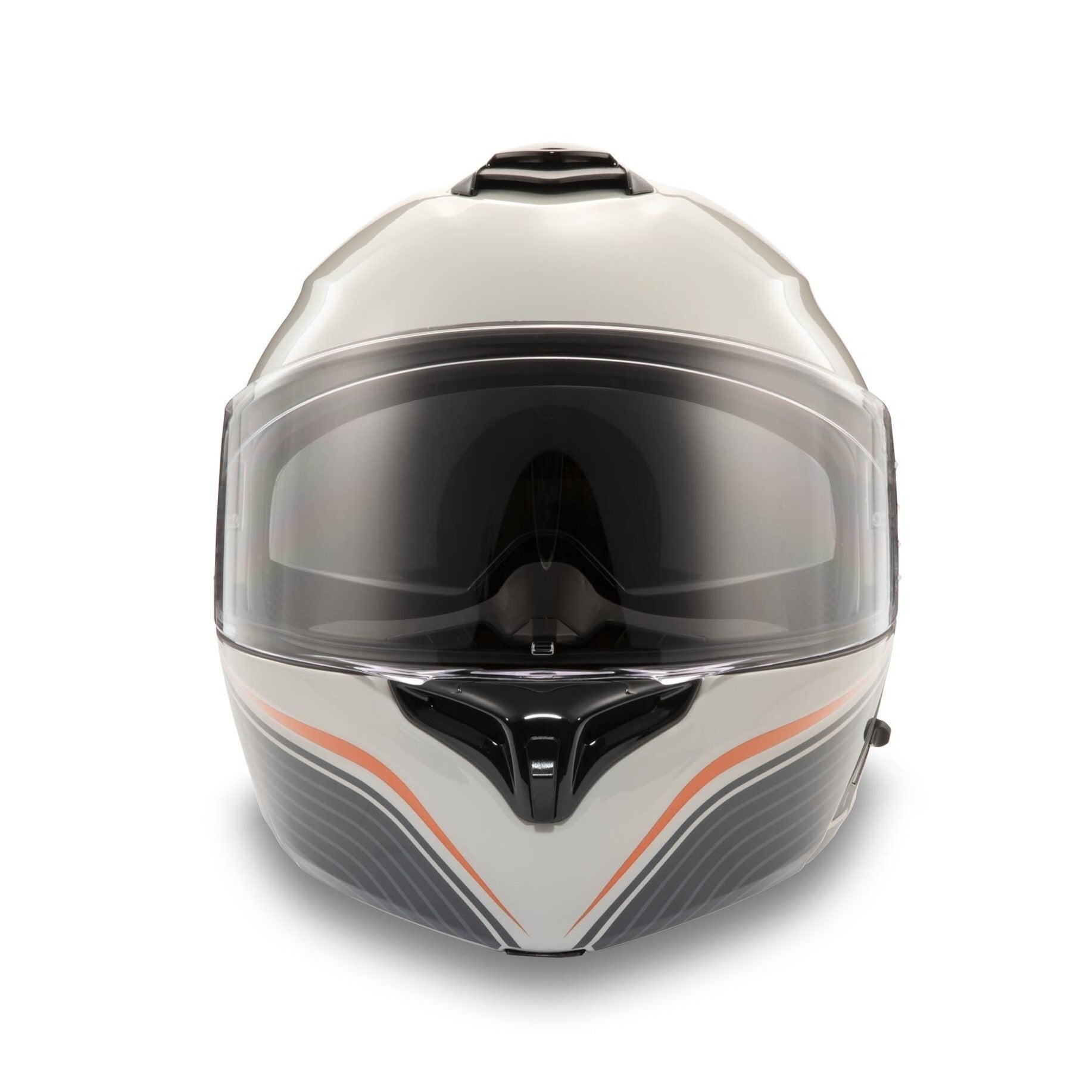
Title: HARLEY-DAVIDSON® OUTRUSH R-N03 MODULAR HELMET
Price: £314.79
SHOP NOW
II. Types of Motorcycles: Navigating the Diverse Landscape
Motorcycles come in a wide variety of types, each designed for specific purposes and riding conditions. The primary categories include:
A. Street Bikes:
1. Sportbikes: These motorcycles are known for their aerodynamic design, powerful engines, and aggressive riding position. They excel in speed and handling, making them popular for racing and spirited riding.
2. Naked Bikes: Stripped of fairings, naked bikes prioritize agility and maneuverability. They offer an upright riding position and a more comfortable riding experience compared to sportbikes.
3. Cruisers: These classic motorcycles emphasize comfort and style, featuring low-slung seats, relaxed riding positions, and powerful engines that produce a distinctive rumble.
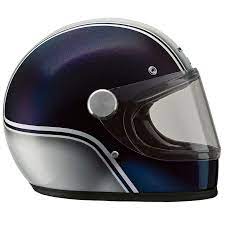
Title: BMW GRAND RACER SEBRING HELMET
Price: £350.00
SHOP NOW
4. Touring Motorcycles: Designed for long-distance travel, touring motorcycles provide ample storage space, comfortable seating, and powerful engines capable of carrying heavy loads.
B. Off-Road Bikes:
1. Dirt Bikes: Built for tackling rough terrain, dirt bikes are lightweight and agile, featuring long-travel suspension and knobby tires. They are primarily used for motocross racing and trail riding.
2. Enduro Bikes: Enduro bikes combine the off-road capabilities of dirt bikes with street legality, making them suitable for both on-road and off-road adventures.
3. Dual-Sport Bikes: These versatile motorcycles seamlessly transition between on-road and off-road riding, offering a balance of performance and practicality.
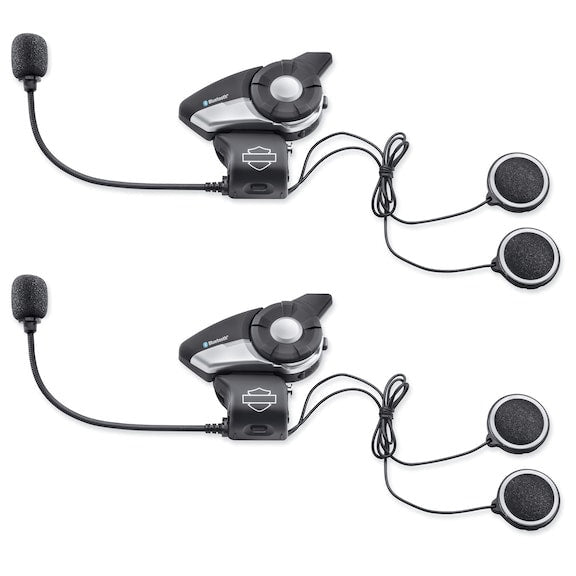
Title: HARLEY-DAVIDSON® BOOM! AUDIO 20S BLUETOOTH HELMET DUAL HEADSET PACK
Price: £534.99
SHOP NOW
4. Adventure Bikes: Designed for long-distance off-road travel, adventure bikes feature rugged construction, long-travel suspension, and large fuel tanks, enabling riders to explore remote and challenging terrain.
C. Specialized Motorcycles:
1. Scooters: Ideal for urban commuting, scooters are characterized by a step-through design, automatic transmission, and compact size. They offer ease of use and practicality for short-distance travel.
2. Mopeds: Similar to scooters, mopeds have a limited engine size and speed, making them suitable for short-distance travel and errands.
3. Three-Wheeled Motorcycles: These motorcycles feature an additional wheel for stability, making them more accessible to new riders and those seeking added confidence on the road.
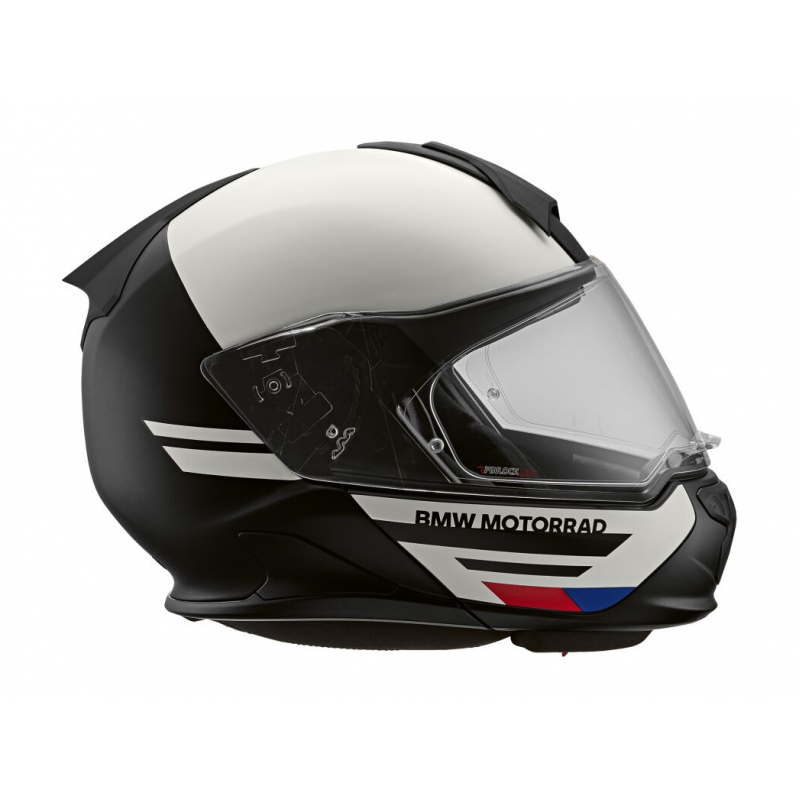
Title: BMW MOTORRAD SYSTEM 7 EVO HELMET - MOTO
Price: £200.00
SHOP NOW
4. Electric Motorcycles: Powered by electric motors, electric motorcycles offer zero emissions and a quiet riding experience. They are gaining popularity due to their environmental benefits and increasing performance.
III. Components of a Motorcycle: Unraveling the Inner Workings
A. Engine:
1. Internal Combustion Engines: Most motorcycles utilize internal combustion engines, typically powered by gasoline or diesel. These engines convert the chemical energy of fuel into mechanical energy, driving the motorcycle forward.
2. Electric Motors: Electric motorcycles use electric motors powered by batteries. These motors provide instant torque and acceleration, with zero emissions and a smooth, quiet riding experience.
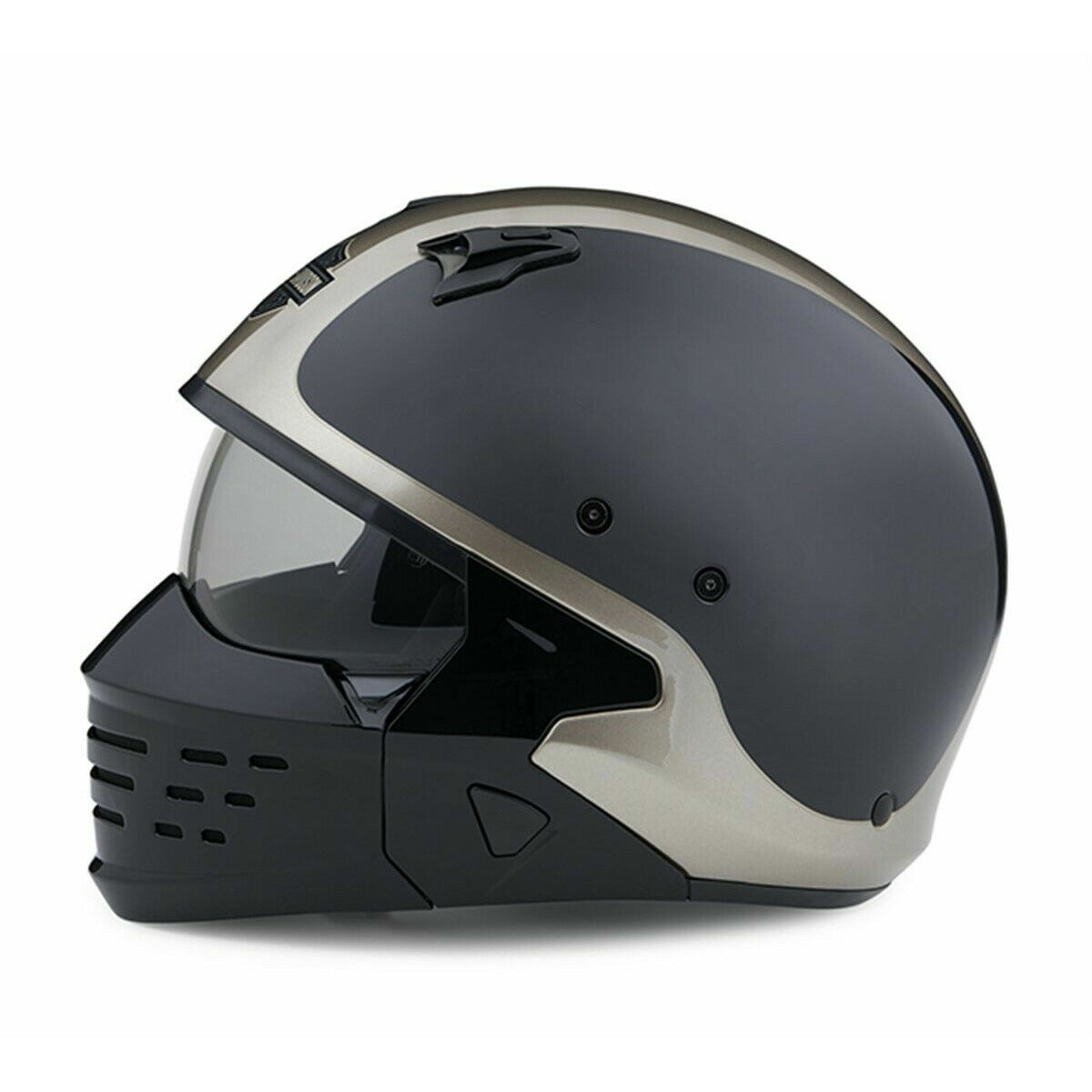
Title: HARLEY-DAVIDSON® SPORT GLIDE 2-IN-1 GREY/BLACK HELMET
Price: £230.99
SHOP NOW
B. Chassis:
1. Frame: The frame is the structural backbone of a motorcycle, providing support and rigidity. It consists of various components, including the headstock, downtube, top tube, and swingarm.
2. Suspension: The suspension system absorbs bumps and vibrations from the road surface, ensuring a smooth and controlled ride. It typically consists of front forks and a rear shock absorber.
3. Wheels and Tires: Motorcycles have two wheels, with tires specifically designed for different riding conditions. Street tires provide good grip on paved roads, while off-road tires excel in loose surfaces and rough terrain.

Title: BMW MOTORRAD SYSTEM 7 EVO HELMET
Price: £520.00
SHOP NOW
C. Controls:
1. Handlebars: The handlebars allow the rider to steer the motorcycle and control various functions, such as the throttle, clutch, and brakes.
2. Throttle: The throttle controls the flow of fuel or air into the engine, determining the power output and speed of the motorcycle.
3. Clutch: The clutch engages and disengages the engine from the transmission, allowing the rider to shift gears smoothly and stop without stalling.
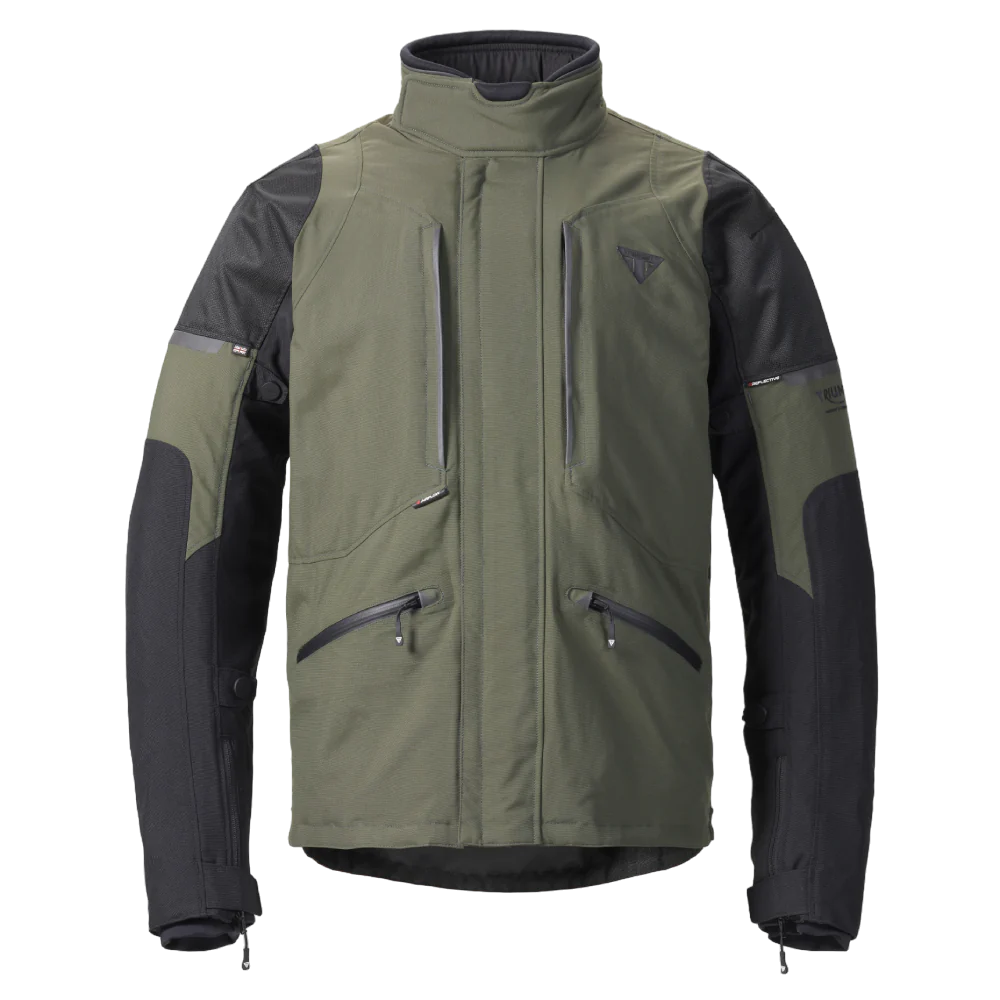
Title: TRIUMPH CRANBOURNE JACKET - KHAKI
Price: £320.00
SHOP NOW
4. Gear Shifter: The gear shifter changes the gear ratio, enabling the rider to adjust the motorcycle's speed and torque output.
5. Brakes: Motorcycles have front and rear brakes, typically operated by hand and foot levers, respectively. They slow down or stop the motorcycle by applying friction to the wheels.
D. Other Components:
1. Seat: The seat provides comfort and support for the rider during long rides.
2. Fuel Tank: The fuel tank stores the fuel used by the engine.
3. Exhaust System: The exhaust system channels exhaust gases away from the engine and reduces noise levels.
4. Lighting: Motorcycles have headlights, taillights, and turn signals for visibility and safety during nighttime riding.
IV. Safety and Regulations: Ensuring a Secure Ride
A. Importance of Wearing Protective Gear:
Riding a motorcycle carries inherent risks, making it crucial for riders to wear protective gear to minimize the risk of injury in an accident.
1. Helmets: Helmets are essential for protecting the rider's head in the event of a crash. They significantly reduce the risk of severe head injuries and fatalities.
2. Protective Clothing: Protective clothing, such as riding jackets, pants, gloves, and boots, offers abrasion resistance and impact protection, reducing the severity of injuries in a fall.
B. Motorcycle Safety Laws and Regulations:
1. Licensing Requirements: Most countries have licensing requirements for motorcycle riders. These requirements typically involve passing a written test and a practical riding test to demonstrate proficiency and knowledge of motorcycle operation.
2. Speed Limits: Motorcycles are subject to the same speed limits as other vehicles. Exceeding the speed limit can result in fines, penalties, and increased risk of accidents.
3. Lane-Splitting: Lane-splitting, the practice of riding a motorcycle between lanes of traffic, is legal in some jurisdictions and prohibited in others. Riders should be aware of local laws and regulations regarding lane-splitting.
4. Group Riding: When riding in a group, it's essential to maintain a safe following distance, communicate effectively with hand signals, and be mindful of other road users.
V. Motorcycle Culture: A Brotherhood of Passion
A. Motorcycle Clubs and Organizations:
Motorcycle clubs and organizations bring together riders who share a common passion for motorcycles. These groups organize events, rides, and gatherings, fostering a sense of community and camaraderie among motorcyclists.
B. Motorcycle Rallies and Events:
Motorcycle rallies and events are popular gatherings of motorcycle enthusiasts from around the world. These events feature bike shows, live music, vendors, and various activities, attracting thousands of participants.
C. Custom Motorcycles and Modifications:
Custom motorcycles are a reflection of a rider's individuality and creativity. Riders often modify their motorcycles to improve performance, enhance aesthetics, or create unique and personalized rides.
D. Motorcycle Art and Literature:
Motorcycles have inspired numerous works of art, literature, and music. From paintings and sculptures to books and movies, motorcycles have captured the imagination of artists and storytellers worldwide.
"The motorcycle is not just a vehicle; it's a way of life. It's about freedom, independence, and self-expression. When you ride a motorcycle, you're not just going from point A to point B; you're experiencing the world in a whole new way." - Unknown
VI. Environmental Impact of Motorcycles: Balancing Freedom and Responsibility
A. Emissions and Air Pollution:
Motorcycles contribute to air pollution through the emission of exhaust gases, including carbon dioxide, nitrogen oxides, and hydrocarbons. However, compared to cars, motorcycles generally produce lower emissions due to their smaller engines and lighter weight.
B. Noise Pollution:
Motorcycles can generate significant noise, especially those with modified exhaust systems. Excessive noise can be a nuisance to communities and can pose health risks to riders and pedestrians.
C. Motorcycle Recycling and Disposal:
Proper disposal and recycling of motorcycles are essential for minimizing their environmental impact. Many countries have established programs for the responsible recycling of motorcycles and their components.
VII. Future of Motorcycles: Embracing Innovation and Sustainability
A. Electric Motorcycles and Alternative Fuels:
Electric motorcycles and alternative fuel motorcycles, such as hydrogen-powered motorcycles, are gaining traction as sustainable alternatives to traditional gasoline-powered motorcycles. These technologies offer zero emissions and reduced environmental impact.
B. Advanced Safety Features and Technology:
Motorcycles are witnessing the integration of advanced safety features and technology, such as anti-lock brakes (ABS), traction control systems (TCS), and lane departure warning systems (LDWS). These features enhance rider safety and confidence.
C. Increasing Popularity of Motorcycles for Urban Commuting:
As urban areas become increasingly congested, motorcycles are gaining popularity as a convenient and efficient mode of transportation for commuting. Motorcycles can navigate through traffic more easily, reducing travel time and contributing to a more sustainable and livable urban environment.
VIII. Conclusion: A Timeless Symbol of Freedom and Adventure
Motorcycles have come a long way since their humble beginnings, evolving into versatile and captivating machines that embody freedom, adventure, and personal expression. From the iconic Harley-Davidsons to the sleek Japanese sportbikes, from off-road adventures to daily commutes, motorcycles have earned a place in transportation and culture.
As technology continues to advance and societal attitudes towards sustainability evolve, the future of motorcycles looks promising. Electric motorcycles and alternative fuels offer a path towards cleaner and more sustainable riding. Advanced safety features enhance rider protection, while increasing popularity for urban commuting highlights the potential of motorcycles to contribute to a more efficient and livable future.
Whether it's the roar of a powerful engine or the quiet hum of an electric motor, the allure of motorcycles remains undeniable. They are a symbol of personal freedom, a means of exploration, and a source of joy for riders worldwide. As we look to the future, motorcycles will undoubtedly continue to capture hearts and imaginations, inspiring generations to come.
"If you want to hear the song of the wind, ride a motorcycle." - Unknown
Outline:
- Introduction: Unveiling the World of Motorcycles
- Types of Motorcycles: Navigating the Diverse Landscape
- Components of a Motorcycle: Unraveling the Inner Workings
- Safety and Regulations: Ensuring a Secure Ride
- Motorcycle Culture: A Brotherhood of Passion
- Environmental Impact of Motorcycles: Balancing Freedom and Responsibility
- Future of Motorcycles: Embracing Innovation and Sustainability
- Conclusion: A Timeless Symbol of Freedom and Adventure
FAQ:
1. What are the different types of motorcycles?
- Sportbikes: Known for their aerodynamic design, powerful engines, and aggressive riding position, sportbikes excel in speed and handling.
- Naked Bikes: Stripped of fairings, naked bikes prioritize agility and maneuverability, offering an upright riding position and a more comfortable riding experience compared to sportbikes.
- Cruisers: These classic motorcycles emphasize comfort and style, featuring low-slung seats, relaxed riding positions, and powerful engines that produce a distinctive rumble.
- Touring Motorcycles: Designed for long-distance travel, touring motorcycles provide ample storage space, comfortable seating, and powerful engines capable of carrying heavy loads.
- Off-Road Bikes: Built for tackling rough terrain, off-road bikes are lightweight and agile, featuring long-travel suspension and knobby tires.
- Dual-Sport Bikes: These versatile motorcycles seamlessly transition between on-road and off-road riding, offering a balance of performance and practicality.
- Adventure Bikes: Designed for long-distance off-road travel, adventure bikes feature rugged construction, long-travel suspension, and large fuel tanks, enabling riders to explore remote and challenging terrain.
- Scooters: Ideal for urban commuting, scooters are characterized by a step-through design, automatic transmission, and compact size. They offer ease of use and practicality for short-distance travel.
- Mopeds: Similar to scooters, mopeds have a limited engine size and speed, making them suitable for short-distance travel and errands.
- Three-Wheeled Motorcycles: These motorcycles feature an additional wheel for stability, making them more accessible to new riders and those seeking added confidence on the road.
- Electric Motorcycles: Powered by electric motors, electric motorcycles offer zero emissions and a quiet riding experience. They are gaining popularity due to their environmental benefits and increasing performance.
2. What are the main components of a motorcycle?
- Engine: Converts chemical energy of fuel into mechanical energy, propelling the motorcycle forward.
- Chassis: Provides structural support and rigidity, consisting of the frame, suspension, wheels, and tires.
- Controls: Allow the rider to steer, accelerate, shift gears, and brake the motorcycle.
- Other Components: Seat, fuel tank, exhaust system, lighting, and various electrical components.
3. Why is wearing protective gear important when riding a motorcycle?
- Protective gear, such as helmets, riding jackets, pants, gloves, and boots, minimizes the risk of injury in an accident by providing abrasion resistance and impact protection.
4. What are some motorcycle safety laws and regulations?
- Licensing requirements, speed limits, lane-splitting regulations, and group riding etiquette vary by jurisdiction. Riders should be aware of local laws and regulations.
5. What is motorcycle culture like?
- Motorcycle clubs and organizations foster a sense of community and camaraderie among riders, organizing events, rides, and gatherings.
- Motorcycle rallies and events attract enthusiasts from around the world, featuring bike shows, live music, vendors, and various activities.
- Custom motorcycles and modifications reflect a rider's individuality and creativity.
- Motorcycle art, literature, and music showcase the cultural significance of motorcycles.
6. What is the environmental impact of motorcycles?
- Motorcycles contribute to air pollution through exhaust emissions but generally produce lower emissions compared to cars.
- Excessive noise from motorcycles can be a nuisance and pose health risks.
- Proper disposal and recycling of motorcycles and their components minimize environmental impact.
7. What does the future of motorcycles look like?
- Electric motorcycles and alternative fuel technologies offer a sustainable future for motorcycles, reducing emissions and environmental impact.
- Advanced safety features and technology enhance rider safety and confidence.
- Increasing popularity for urban commuting highlights the potential of motorcycles to contribute to more efficient and livable urban environments.
Explore More:
Discover the Spirit of Kawasaki: Apparel Designed for the Thrill Seekers
Ignite Your Ride: Motobike Jackets That Embody Freedom and Adventure
Ride in Unstoppable Style: Motorcycle Pants Built for Seamless Transitions
Grip the Road with Precision: Motorbike Gloves for Unrivaled Control
Embrace the Elements: Motorcycle Jackets That Defy Wind and Weather
Protect Your Hands with Confidence: Motorcycle Gloves for Unwavering Grip
Head-to-Toe Excellence: Explore Our Collection of Motorcycle Apparel